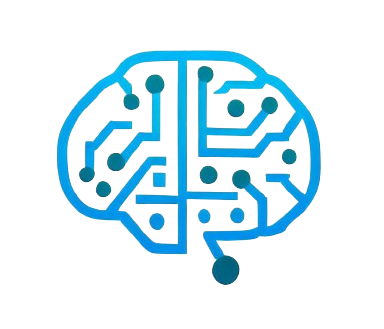At the intersection of computer science, artificial intelligence, and linguistics lies Natural Language Processing (NLP), a technology aiming to bridge the understanding gap between humans and machines. NLP facilitates the interpretation, generation, and manipulation of human language by computers, enabling them to perform a variety of tasks such as translation, sentiment analysis, and question-answering.
The core objective of NLP is to enable computers to understand language as humans do—recognizing the intricate patterns, intentions, and nuances that language holds. As the digital universe expands and the amount of text data increases exponentially, the significance of NLP continues to grow.
Text Mining
The realm of text mining is an essential area of inquiry within data science, where the goal is to process and analyze substantial volumes of unstructured textual data to uncover hidden information that can lead to actionable insights. In the digital age, the proliferation of text data from various sources such as social media, blogs, emails, online articles, and corporate documents calls for advanced techniques that can transform this torrent of text into structured formats suitable for further analytical processing.
 Text mining, sometimes referred to as text data mining or text analytics, involves a sequence of processes that begin with the identification and gathering of relevant textual information. This raw data is frequently messy, scattered, and laden with non-relevant sections that must be scrubbed and prepared for analysis. Data cleansing, therefore, is a preliminary and vital step in the text mining process, involving the removal of noise and inconsistencies that can impair the quality of the outcomes.
Text mining, sometimes referred to as text data mining or text analytics, involves a sequence of processes that begin with the identification and gathering of relevant textual information. This raw data is frequently messy, scattered, and laden with non-relevant sections that must be scrubbed and prepared for analysis. Data cleansing, therefore, is a preliminary and vital step in the text mining process, involving the removal of noise and inconsistencies that can impair the quality of the outcomes.
Once the data is cleaned and ready, the heart of text mining lies in its ability to detect patterns, trends, and relationships within large bodies of text that are not readily evident. Algorithms and models sift through data, recognizing patterns of usage, frequency of terms, and correlations between different textual elements. These statistical patterns can be subtle, nuanced, and embedded within the natural flow of language. Text mining techniques need to discern these patterns amidst the various use cases, syntactical structures, and morphological variations that human language presents.
An important component of text mining rests in its linguistic analysis capabilities. It goes beyond quantitative statistical analysis, extending into the qualitative realm, understanding synonyms, ambiguities, context, and even the evolution of language over time. NLP techniques, as described earlier, are employed to disentangle the complexities of language, making it analyzable for machines. Text mining systems often incorporate components like stemming and lemmatization, where words are reduced to their base or root form, and stop word removal, where common but irrelevant words are eliminated, to refine the focus of the analysis.
As text mining tools plunge into the text data, they employ algorithms to classify and categorize the information. Classification tasks, for example, might involve assigning documents to predefined categories, whereas clustering might discover new groupings based on text similarities. This classification and categorization are integral to managing, searching, and retrieving knowledge effectively from the vast ocean of text at our disposal.
More profound applications hinge on the ability of text mining to aid in natural language understanding, including but not limited to, sentiment analysis, topic extraction, and entity recognition. In customer service, for instance, text mining techniques can sift through customer feedback to pinpoint dissatisfaction, thus enabling companies to quickly address product or service issues. In the world of finance, text mining helps in analyzing news articles and financial reports to predict stock market movements. For health informatics, it can mine medical literature and patient records to support diagnostic tools and improve healthcare outcomes.
Techniques in NLP and Text Mining
Delving deeper into the methodologies utilized in NLP and text mining reveals a complex landscape where linguistic, statistical, and computational strategies interlace to convert unstructured textual data into invaluable insights. The methodologies employed are engineered to mimic human language understanding and often require a series of layered tasks, each building upon the last to contribute to the end objective of dissecting and comprehending human communication.
Tokenization is typically the first gate through which textual data must pass. This crucial step divides comprehensive and continuous text streams into manageable pieces, or tokens, which can be as small as words or as significant as sentences. By breaking down the text, tokenization allows for the initial categorization of data, helping to identify the building blocks of meaning within the corpus. Tokens serve as the basic units for further semantic processing.
Once tokenized, text segments are subjected to part-of-speech (POS) tagging. POS tagging is akin to unraveling the grammatical DNA of a language, assigning tags such as nouns, verbs, adjectives, and adverbs to each token based on both its definition and contextual usage. Sophisticated algorithms and models, including hidden Markov models or conditional random fields, are applied to execute POS tagging with a high degree of precision, although the inherent ambiguity and flexibility of natural language can make this a challenging task.
 With the fundamentals of a text dissected, the next layer of processing often involves parsing and constructing a syntax tree. Parsing algorithms dissect sentences further, determining the role each word plays in a sentence and how these words interact with each other to produce meaning. Syntactic parsing not only helps to understand the grammatical structure of a sentence but also contributes to tasks that require a deeper understanding of language such as machine translation and extracting relational data.
With the fundamentals of a text dissected, the next layer of processing often involves parsing and constructing a syntax tree. Parsing algorithms dissect sentences further, determining the role each word plays in a sentence and how these words interact with each other to produce meaning. Syntactic parsing not only helps to understand the grammatical structure of a sentence but also contributes to tasks that require a deeper understanding of language such as machine translation and extracting relational data.
Named Entity Recognition (NER) builds upon the foundational groundwork laid by tokenization and POS tagging. In NER, entities that are often of specific interest—such as names of people, organizations, geographical locations, and others—are identified and categorized. This process is fundamental in various NLP applications where the identification of entities forms the crux of the task at hand, such as in information retrieval, summarization, and question-answering systems. NER systems can be rule-based, leveraging handcrafted lexical and syntactic rules, or they might employ machine learning approaches that learn to recognize entities from annotated training data.
By analyzing the emotional tone behind a sequence of words, sentiment analysis determines the writer’s or speaker’s attitude toward the subject matter or the overall contextual polarity of the text. This is particularly useful for monitoring social media where customer opinions and feedback are abundant. Techniques employed in sentiment analysis include lexical-based approaches that use predefined lists of words with known sentiment scores and machine learning models that can learn from labeled examples of text with sentiments.
Topic modeling is another sophisticated technique that is particularly valuable when dealing with large sets of unstructured text data. Topic models such as Latent Dirichlet Allocation (LDA) use probabilistic methods to uncover the latent thematic structure in a corpus. They do not require any previous annotation but rather infer patterns of word clusters and their corresponding weights to suggest topics that pervade the corpus. Well-executed topic modeling helps in summarizing large datasets, categorizing documents, and aiding in information discovery and content recommendation.
As computational power grows and machine learning evolves, so too does the sophistication of these techniques. Deep learning, particularly with its neural network architectures, such as recurrent neural networks (RNN), long short-term memory networks (LSTM), and the more recent transformer-based models like BERT and GPT, has significantly impacted NLP tasks. These models offer remarkable improvements in learning contextual representations and have set new standards in performance across various NLP challenges.
The combined application of all these text mining techniques allows for a multi-tiered analysis that makes it possible to convert raw textual data into structured, understandable insights. While these techniques represent an evolution in machine understanding, they also underscore the inherent complexity of human language and the ongoing quest for machines to comprehend it as we do. As algorithms and tools sharpen their proficiency, the boundary between human and machine comprehension is not just closing but is being redefined by the potential of what artificial intelligence can achieve in the realm of NLP and textual analysis.
